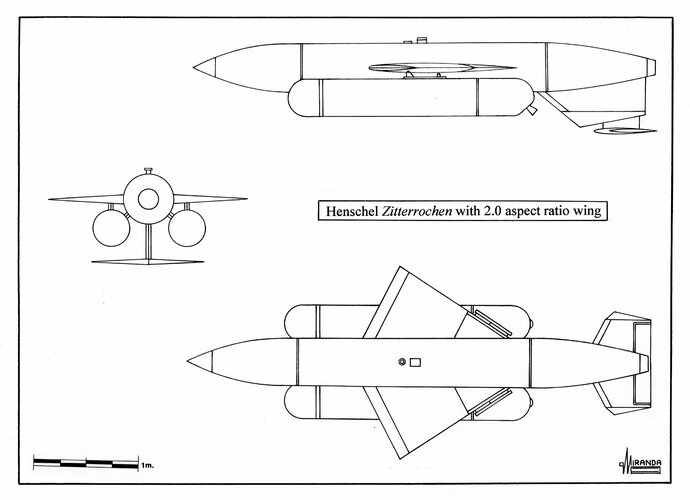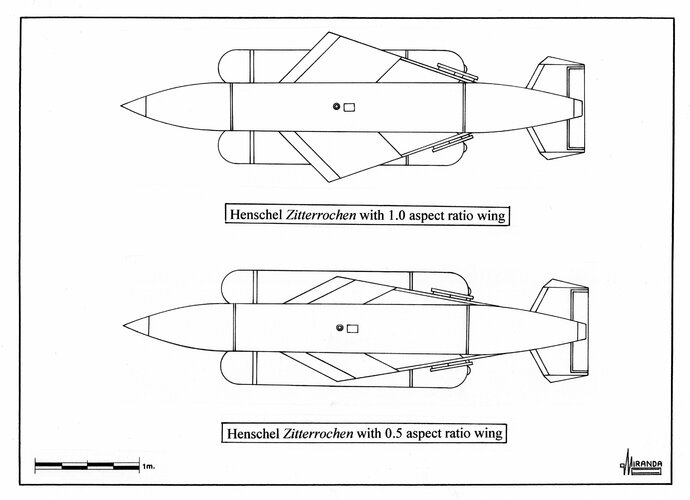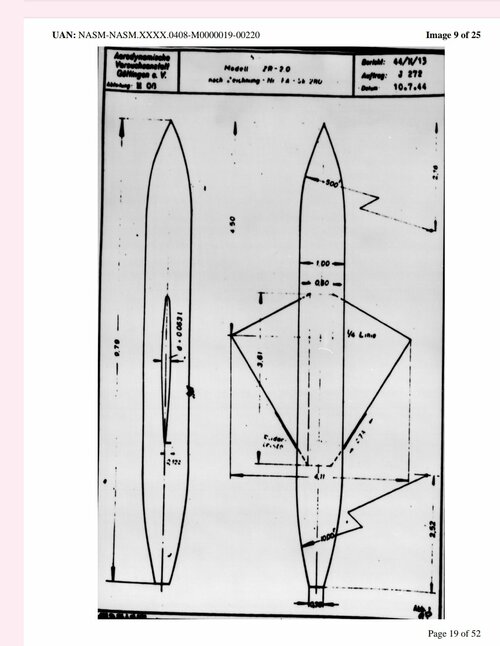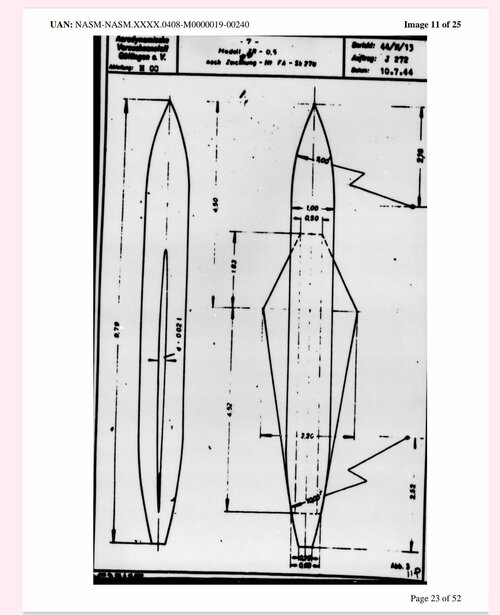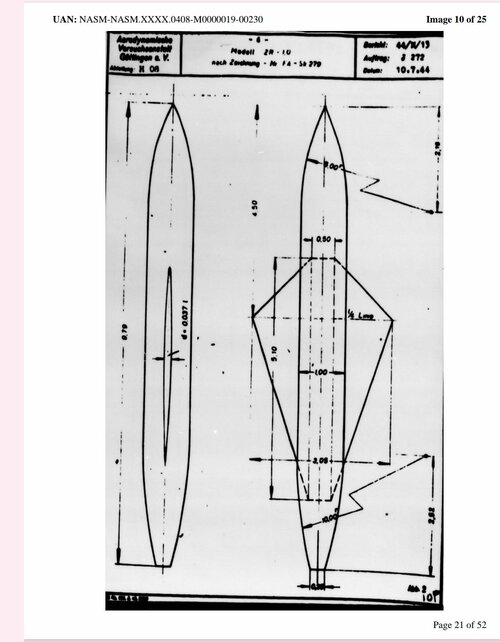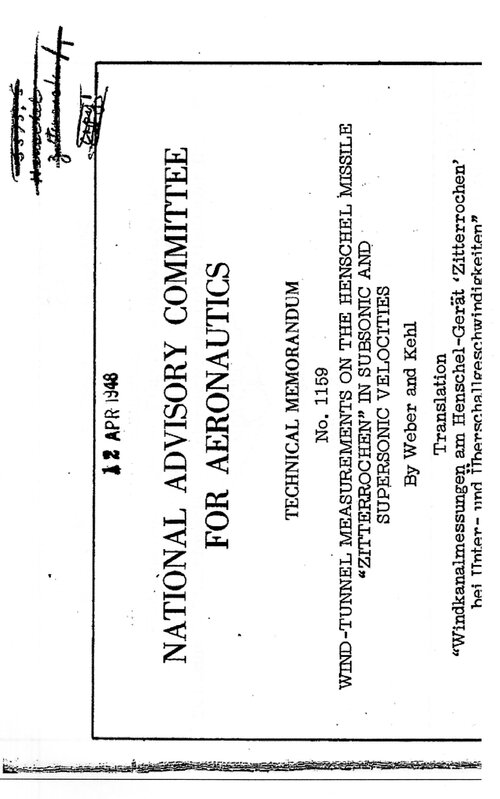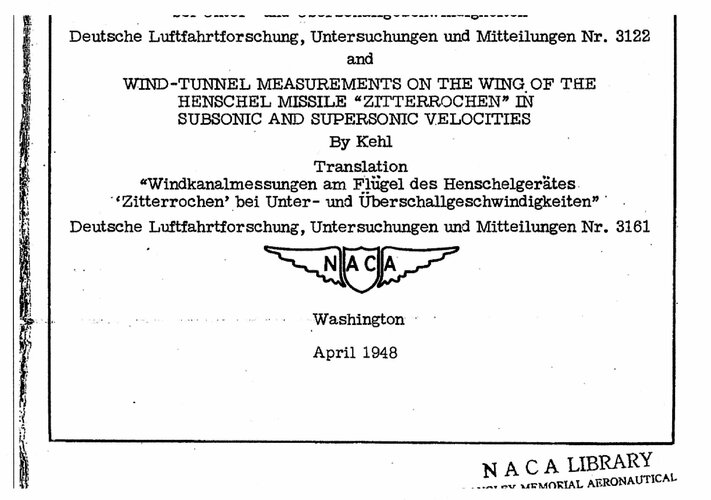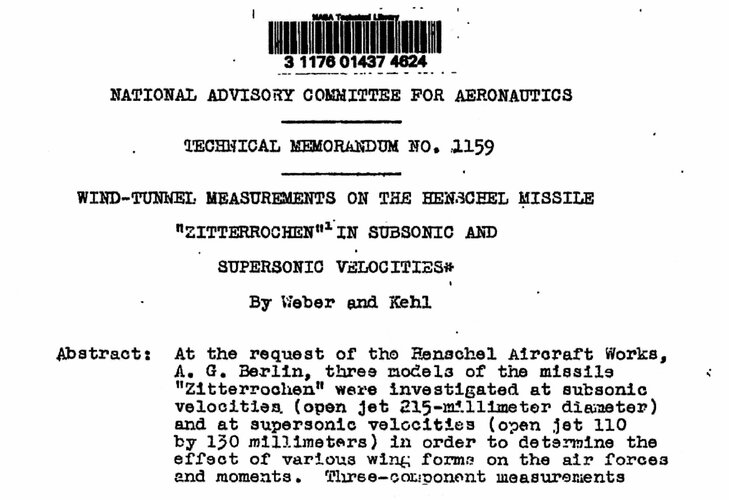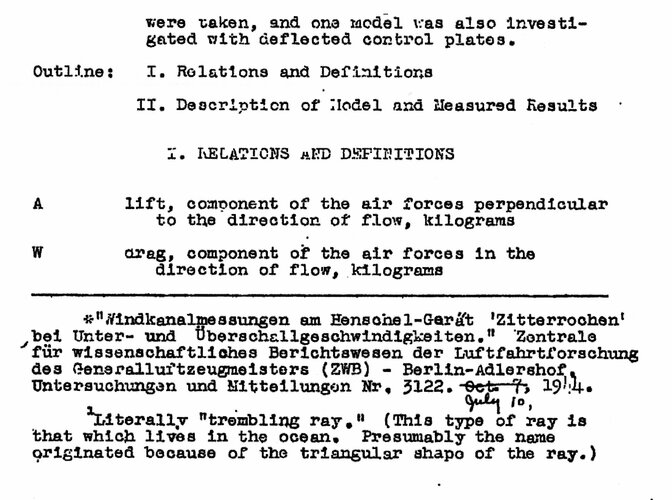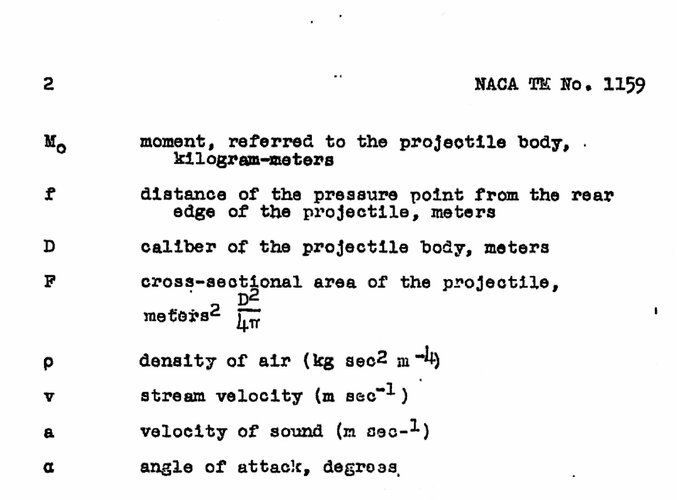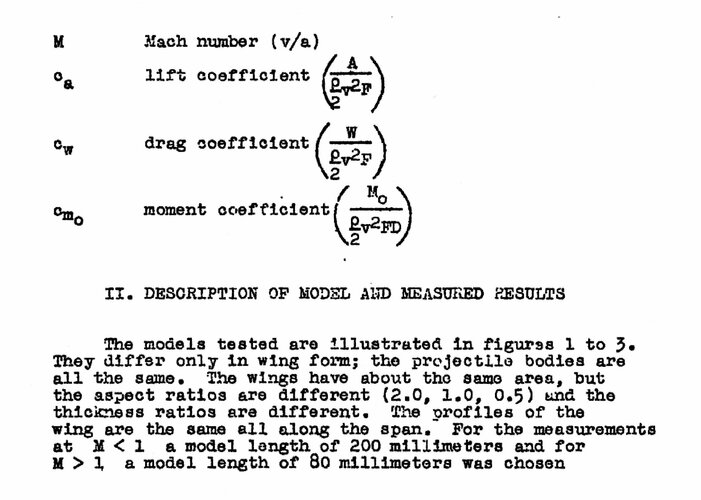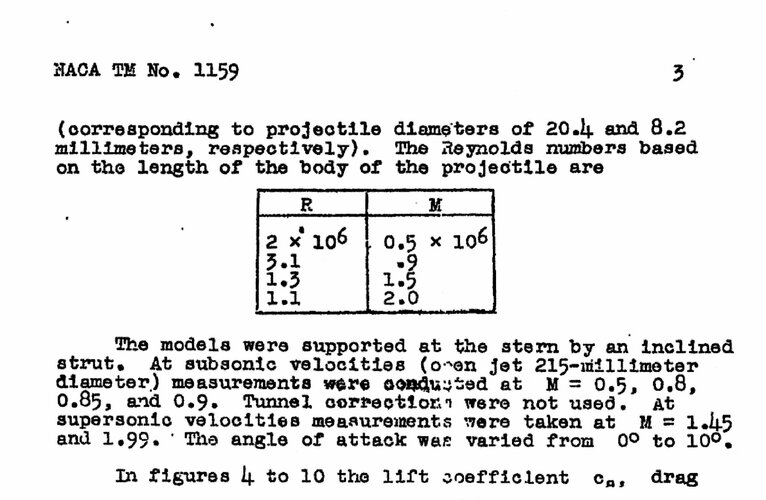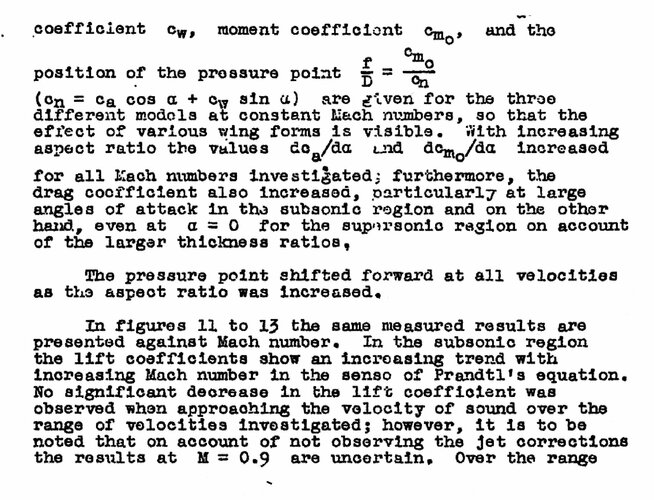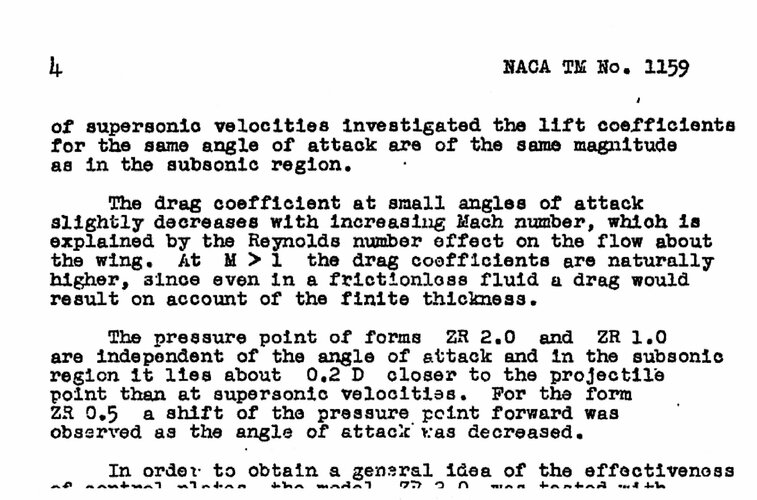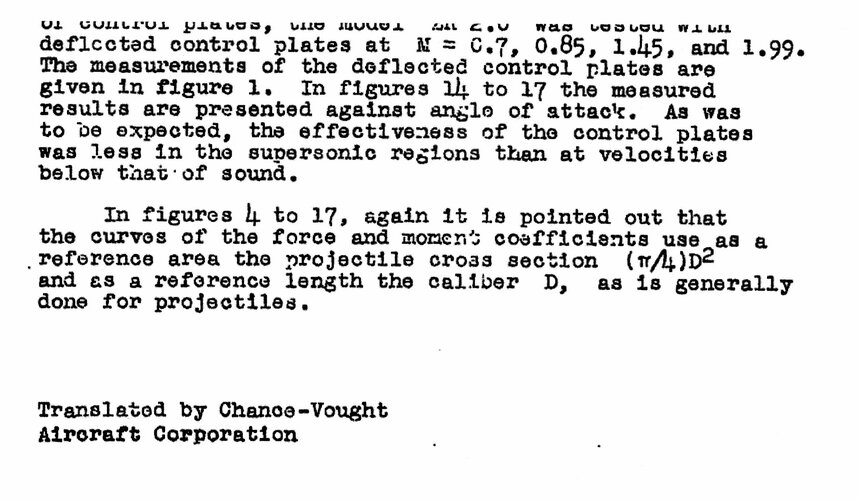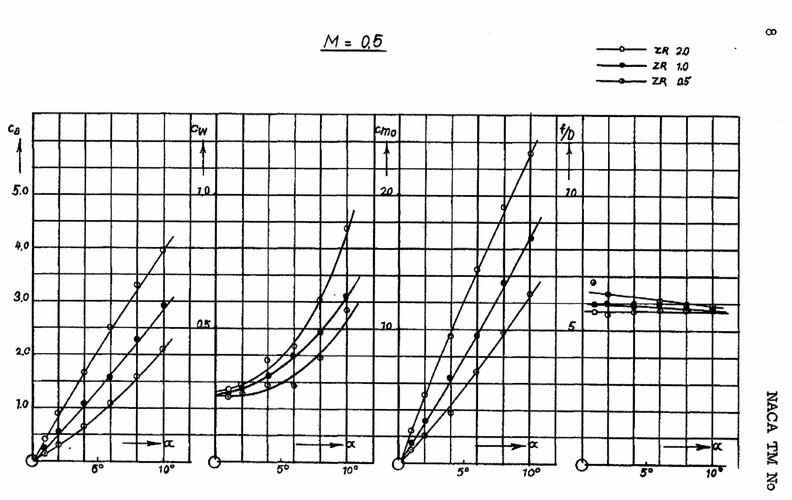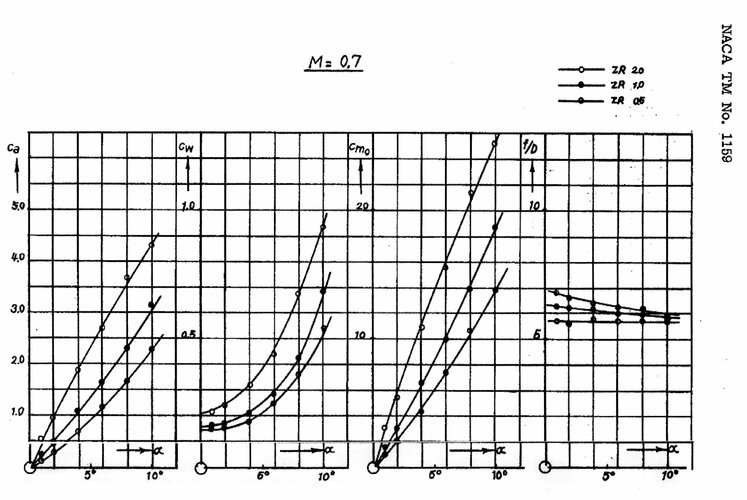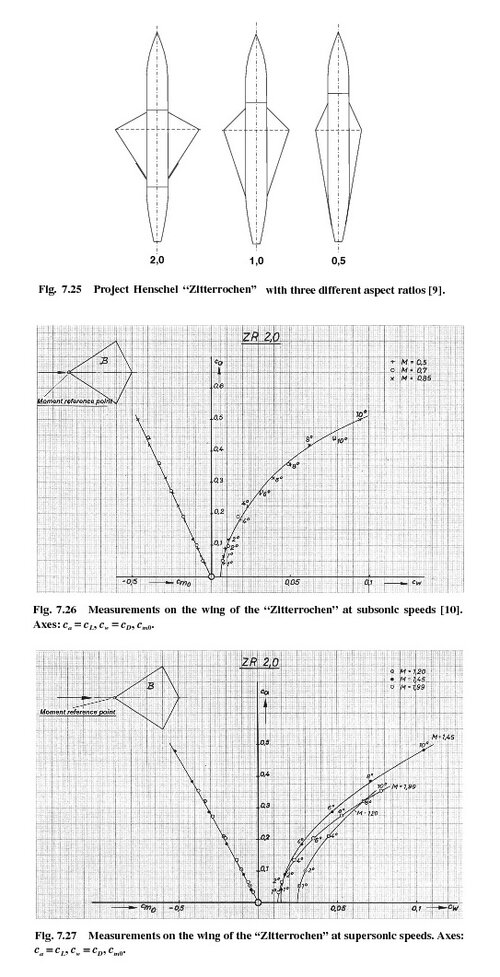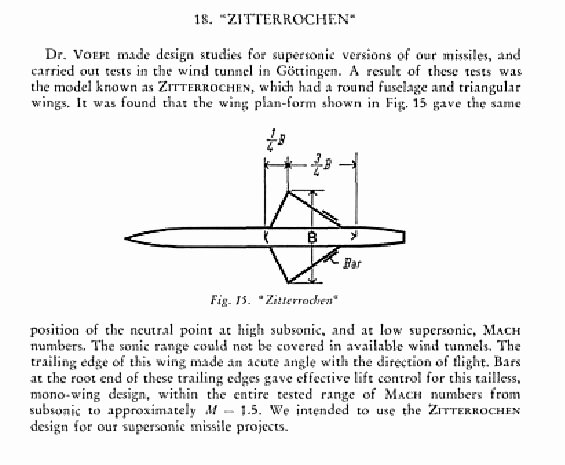Henschel Zitterrochen
The Messerschmitt P 1111 (January 15,1945 jet fighter project) was fast, climbed very fast and high, manoeuvred exceedingly well at low speed, had enough room to transport a lot of fuel and armament, could be built in wood and was surprisingly small and nice to look at.
It combined the reduced frontal section of the Messerschmitt P 1110 project, the air intakes of the Me 262 HG III design and a new 52-degrees sweep wing, with 9.16 meters wingspan, based on that of the Me 163 rocket fighter.
However, the design contained a deathly fault: The P 1111 was very unstable at transonic speed, when the centre of pressure displaced itself rearwards and outwards from its usual location, following the main spar of the wing.
The problem had been already noticed during the July 1944 tests of the Messerschmitt Me 163 B (V18) rocket plane. There were violent oscillations in the vertical axis, followed by a prolonged nose-down pitch with a 60 to 80-degrees dive and total loss of control, meanwhile, the Mach number increased rapidly until it became impossible to hold the aircraft, which took over and steepened the dive to vertical.
The Messerschmitt P 1112/S2 (March 3,1945 project) tried to solve the oscillations problem. It had a broader and shorter wing that was supposed to delay the centre of pressure displacing phenomena. The cockpit was integrated into the fuselage curvature and located almost 2 meters further on than in the P 1111, to avoid that the shock wave generated interfered with the air intakes. The design proved to be more stable, with 6 sq. m less of wing surface but, on the other hand, it lost its good performances at low speed and the capacity to carry most fuel in the wings.
Alexander Lippisch also worked on the transonic oscillation problem, designing a variant of the P 1111 named P 15 (March 3,1945 project). To him, the solution was to increase the wing chord, moving forward the centre of gravity and positioning the air intakes in the nose.
The P 15 combines different elements used in the Messerschmitt projects on which Lippisch had cooperated.
The postwar prototype Northrop X-4 was specifically built to test the performances of this type of tailless designs. During the experiments conducted between 1949 and 1951, the aircraft proved unstable in transonic regime (higher than 0.92 Mach) and that the migration of the centre of pressure could not be solved with the technology available at the time.
The British also built the De Havilland DH.108 experimental tailless prototype. The designer, fearing that the airplane could be unstable at low speed, built a wing of extended wingspan (12 meters) instead of reducing it. The centre of pressure migration was aggravated under these conditions, producing an additional problem of aileron reversal, due to the twisting of the wing.
During the spring of 1944, Dr. Ing. Voepl carried out some tests with windtunnel models looking for a solution to the problem of the centre of pressure displacing.
Working at the AVA Göttingen facilities with subsonic models of 200-mm length and 20.4-mm of diameter and with supersonic models of 80 x 8.2-mm, Dr. Voelp discovered that using rhomboid-shaped wings (constructed with aspect ratios of 2.0, 1.0 and 0.5) the pressure center remained stable at high subsonic and low supersonic Mach numbers.
Based on this information, Henschel Flugzeugwerke developed a supersonic version of the Hs 293 anti-ship missile powered by two Schmidding HWK 109-513 rocket engines (A-Stoff + M-Stoff) that had been developed for the air-to-air Pulkzerstörer Hs 293 H missile.
The Walchner roll control system was by Wagner bars, a form of bang/bang spoiler mounted behind the trailing edge of each wing.
In the Hs 293, Hs 295 and Hs 296 projects the destructive power of the weapon was concentrated in the size of the warhead, but in the Zitterrochen the kinetic energy of the impact only needed to be supplemented by a 200 kg warhead.
The project was possibly given the designation Hs 297 and was cancelled in January 1945.
Henschel Zitterrochen technical data
Wingspan (aspect ratio 2.0): 1,560 mm, length: 4,464 mm, height: 936 mm, fuselage diameter: 480 mm, max speed: Mach 1.5, warhead: 200 kg of H.E. Power plant: two Schmidding HWK 109-513 bi-propellant rocket engines with 11 seconds life, each rated at 900 kg peak thrust.

